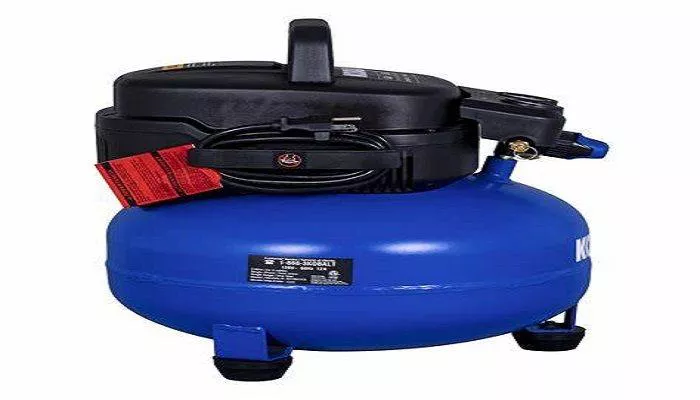Compressed air systems are vital in various industries, from manufacturing to automotive repair. One of the most critical parameters in evaluating a compressor’s performance is CFM (Cubic Feet per Minute), which measures airflow capacity. Understanding CFM is essential for selecting the right compressor, ensuring efficiency, and avoiding operational issues.
This article provides a detailed, professional explanation of CFM, covering:
- Definition of CFM
- Types of CFM Measurements
- Factors Affecting CFM in Compressors
- How to Calculate CFM Requirements
- Importance of CFM in Compressor Selection
- Common Misconceptions About CFM
- Practical Applications and Industry Standards
By the end, you will have a clear understanding of how CFM impacts compressor performance and how to apply this knowledge in real-world scenarios.
What is CFM in Compressor Capacity?
CFM (Cubic Feet per Minute) is a unit of measurement that indicates the volume of air a compressor can deliver per minute at a given pressure (usually measured in PSI – Pounds per Square Inch). It represents the flow rate of compressed air, determining how much air is available to power tools and equipment.
Key Points About CFM
Flow Rate Metric: CFM measures how much air moves through the compressor in one minute.
Pressure Dependency: CFM is always tied to a specific pressure level (e.g., 90 PSI, 100 PSI).
Critical for Performance: A higher CFM means the compressor can support more or larger air tools simultaneously.
Example: If a compressor has a CFM rating of 10 CFM at 90 PSI, it can deliver 10 cubic feet of air per minute when operating at 90 PSI.
Types of CFM Measurements
Not all CFM ratings are the same. Different standards and measurement conditions affect how CFM is reported. The two most common types are:
Standard CFM (SCFM) – Standard Cubic Feet per Minute
Measured at standard conditions:
Temperature: 68°F (20°C)
Pressure: 14.7 PSIA (atmospheric pressure at sea level)
Relative Humidity: 0% (dry air).
Used for comparing compressors under uniform conditions.
Actual CFM (ACFM) – Actual Cubic Feet per Minute
Measured at actual operating conditions (varies with temperature, altitude, humidity). More relevant for real-world applications since it accounts for environmental factors.
Displacement CFM vs. Delivered CFM
Displacement CFM: Theoretical airflow based on piston/rotor movement (does not account for inefficiencies).
Delivered CFM (Free Air Delivery – FAD): Actual usable airflow after accounting for leaks, heat, and pressure drops.
Key Takeaway: Always check delivered CFM (FAD) rather than displacement CFM when selecting a compressor, as it reflects real performance.
Factors Affecting CFM in Compressors
Several factors influence a compressor’s CFM output:
Compressor Type
Reciprocating (Piston) Compressors
- Provide intermittent airflow (CFM varies with motor cycles).
- Lower efficiency compared to rotary screw compressors.
Rotary Screw Compressors
- Deliver continuous airflow (higher CFM at constant pressure).
- More efficient for industrial applications.
Centrifugal Compressors
- Used for very high CFM applications (e.g., large manufacturing plants).
Motor Horsepower (HP)
- Higher HP generally means higher CFM, but efficiency varies by design.
- Example: A 5 HP compressor may deliver 15-20 CFM, while a 10 HP unit provides 30-40 CFM.
Pressure (PSI) Requirements
- Higher PSI reduces CFM due to increased air resistance.
- A compressor rated at 20 CFM at 90 PSI may only deliver 15 CFM at 120 PSI.
Altitude and Temperature
- Higher altitudes reduce air density, decreasing CFM.
- Hotter temperatures reduce air density, lowering CFM output.
Air Leaks and System Efficiency
- Leaks in hoses, fittings, or tanks can reduce effective CFM.
- Regular maintenance ensures optimal CFM delivery.
How to Calculate CFM Requirements
To select the right compressor, you must calculate the total CFM needed for your tools and applications.
Step 1: List All Air Tools & Their CFM Requirements
Check manufacturer specs for each tool (e.g., impact wrench: 4 CFM, spray gun: 10 CFM).
Step 2: Account for Simultaneous Use
If two tools run together (impact wrench + spray gun), add their CFM: 4 CFM + 10 CFM = 14 CFM required.
Step 3: Add a Safety Margin (20-30%)
Compressors lose efficiency over time; extra capacity prevents overloading. 14 CFM + 20% = 16.8 CFM (round up to 17 CFM).
Step 4: Match to Compressor CFM Rating
Choose a compressor with at least 17 CFM at your working PSI.
Importance of CFM in Compressor Selection
Selecting the wrong CFM can lead to:
- Tool Underperformance (slow operation, weak torque).
- Overheating & Premature Wear (compressor running constantly).
- Pressure Drops (intermittent airflow).
Matching CFM to Applications:
| Application | Required CFM Range |
|---|---|
| Small Airbrush | 1-3 CFM |
| Pneumatic Drill | 3-6 CFM |
| Impact Wrench | 4-8 CFM |
| Sandblasting | 10-20 CFM |
| Industrial Machinery | 30+ CFM |
Common Misconceptions About CFM
Myth 1: “Higher HP Always Means Higher CFM”
Not always true. Efficiency, pump design, and compressor type matter more.
Myth 2: “Displacement CFM = Usable CFM”
Displacement CFM is theoretical; delivered CFM (FAD) is what counts.
Myth 3: “PSI and CFM Are Interchangeable”
PSI = Pressure, CFM = Flow. A compressor with high PSI but low CFM won’t run high-demand tools.
Practical Applications & Industry Standards
Industrial Use
Large compressors (50+ CFM) for factories, CNC machines, and automation.
Automotive & Construction
Portable compressors (10-30 CFM) for impact wrenches, nail guns, and sanders.
Medical & Food Industries
Oil-free compressors with precise CFM control for clean air requirements.
ISO & ASME Standards
- ISO 1217 defines testing methods for compressor performance (including CFM).
- ASME PTC-9 provides guidelines for verifying CFM ratings.
Conclusion
CFM is the most critical metric in determining a compressor’s capability. Understanding the difference between SCFM, ACFM, and delivered CFM, calculating your actual CFM needs, and selecting a compressor that matches your pressure and flow requirements will ensure optimal performance and longevity.

